To celebrate 2017, we honor five remarkable individuals: a couple directing the far-reaching Transcendental Meditation® (TM®) pilot study in Chicago Public Schools, to reduce violence and improve lives; a retired Army Airborne Ranger turning post-traumatic stress into post-traumatic growth for veterans; and two women bringing the life-saving benefits of TM to female victims of assault.
Chris and Julia Busch
University of Chicago Crime Lab Chooses the TM “Quiet Time” Program to Reduce Toxic Stress and Violence in Schools
What can we do to reduce youth violence in Chicago’s schools? That was the question posed by the University of Chicago’s Urban Crime Lab—a leader in testing and promoting innovative solutions to intractable problems—in their 2015 nationwide competition for proposals.
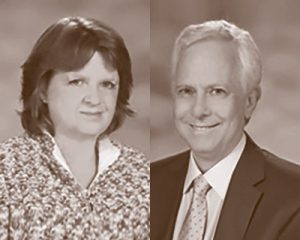
Julia and Chris Busch, Chicago Regional Directors, David Lynch Foundation
Chris and Julia Busch, founding members of the David Lynch FoundationSM (DLF) and regional directors for Chicago, mobilized to offer an answer: DLF’s prevention-based TM “Quiet Time” school program, which has been implemented in schools from Washington, D.C., to Los Angeles and San Francisco.
“There were 225 proposals nationally, and the Crime Lab picked TM ‘Quiet Time’ as one of three studies to pilot,” says Chris, who co-directs the DLF Chicago project with Julia. When the Crime Lab saw the educational benefits of the TM technique, they brought in the Education Lab as well, and “it became a two-pronged effort,” he adds.
Now the Crime and Education Labs have partnered with DLF and Chicago schools “to test whether providing youth with training and time to practice the Transcendental Meditation technique can help youth reduce their toxic stress, succeed in school, and stay safe,” as their website states. Implementing TM practice as part of the school day “might be the lowest-cost mental health intervention imaginable,” they note, adding that the study will “generate rigorous evidence that will help inform Chicago (and other cities) about the value of this intervention as a support for students.”
Implementing TM practice as part of the school day “might be the lowest-cost mental health intervention imaginable.” —University of Chicago Crime and Education Labs
Far-Reaching Potential
“The preliminary results are very promising,” says Julia. The two-year, randomized, controlled study, “Quiet Time: Reducing Toxic Stress to Help Youth Succeed,” has been underway for 18 months. Last year, three public high schools participated, with 35 percent of the total sample size. This year, three new public high schools are participating for the remaining 65 percent. In all, there will be 1,100 to 1,200 students in the TM group, and roughly the same number in the control group.
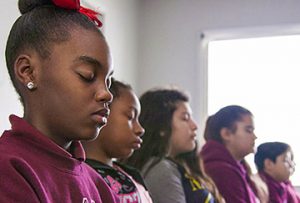
Students practicing the TM technique at a Chicago school as part of the “Quiet Time” program
The Crime and Education Labs will complete their final analysis in fall 2018, once the relevant educational and crime data from the Chicago Public Schools and Police Department are available.
The potential impact for the “Quiet Time” study is enormous. “Once the Crime Lab validates an intervention to a high degree of certainty, then they’re all about helping to get that program institutionalized,” Chris explains. “They work with economists, policy makers, academics, and government to get effective interventions implemented in the mainstream. They’d be looking at school districts adopting ‘Quiet Time’ as a core, violence-prevention, violence-remediation, education-improvement, and learning-readiness program.”
Chicago mothers who’ve lost children to gun violence tell stories of healing through TM (5:17)
Brain-Based Violence Prevention

Chicago families welcome the TM program for their children, their schools, their communities
Research shows the positive impact of the TM technique on executive functions of the brain, which benefits students’ decision-making in times of conflict. “For youth, their brains are still developing,” Julia explains. “Having a tool that’s right there in the school day, twice a day, that’s enhancing their own self-development and brain functioning, can have a profound effect on them individually, and on the school and their neighborhoods.”
She adds that “some funders target the really high-risk youth that have already committed crimes and been in institutional detention. But the TM ‘Quiet Time’ program catches youth earlier on and prevents them from dropping out of school. They have relief in their personal lives, and they have greater strength to attend school, stay in school, and graduate.”
“The TM ‘Quiet Time’ program catches youth earlier on and prevents them from dropping out of school. They have relief in their personal lives, and they have greater strength to attend school, stay in school, and graduate.” —Julia Busch, David Lynch Foundation
Widespread Acceptance
Chicago’s embrace of the “Quiet Time” program has been widespread. Union rules require faculty to vote on new programs, and all the schools elected to implement the TM study. In fact, the school district considered the TM technique to have “sufficient educational value in itself” that it classified “Quiet Time” periods as “instructional time,” reports Chris. Members of the administration, faculty, security, and staff also learned TM.
Students were equally accepting. “Quiet Time” is ordinarily a whole-school program, but because this is a controlled, randomized study, only half the students were invited to learn TM. “Close to 90 percent of those offered opted to learn,” says Chris. “The Crime Lab was thrilled because they don’t see that kind of uptake with other programs they offer.”
The project is having a ripple effect across the community. Now that the highly respected Crime Lab has put its name behind the “Quiet Time” program, there has been “significant movement in adult and juvenile justice corrections in Chicago,” says Chris. He and Julia are also working with a gang intervention organization, where TM is part of a gang detox and reconditioning program.
They’ve also been working with mothers who’ve lost children to gun violence. Women tell their stories in this video , of how their TM practice is helping them move past the trauma of violence in their families.
The project is having a ripple effect across the community. Now that the highly respected Crime Lab has put its name behind the “Quiet Time” program, there has been “significant movement in adult and juvenile justice corrections in Chicago.” —Chris Busch, David Lynch Foundation
“People Are Ready to Listen and Embrace a Program Like This”
These projects are quite rigorous but profoundly rewarding, notes Chris. “It’s very gratifying to see how people in a city like Chicago, across the board, have very much embraced this program. The people are so open, and the issues and the problems are so drastic,” he says.
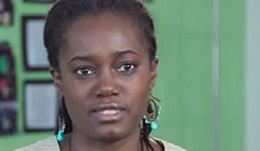
Anita Andrews-Hutchinson, Co-Founder of Village Leadership Academy, a K-8 independent Chicago school where “Quiet Time” is part of the curriculum
Julia adds, “The problems in society have not decreased; they’re increasing—in education, poverty, violence, and terrorism. Citizens are wanting more, for themselves, for their families, and that’s led to a great openness. The years of research and data on TM are now combining with this great need, and mainstream institutions and people in leadership are very open. For leaders in society, stress has increased at a phenomenal rate, so when they hear about this, they also start thinking about themselves.”
Chris also gives credit for the success of the TM “Quiet Time” program to their great staff of 14, who are “working in the schools every day, doing a wonderful job.” A diverse group from Chicago, Fairfield, Iowa, and other parts of the country, they instruct students in the TM technique, observe “Quiet Time” periods, check students’ meditation practice, and engage and support students in myriad ways. “They have the most dedicated, competent focus on getting a great result for the kids—on really being a force to help transform the schools,” he says.
The “Quiet Time” staff “have the most dedicated, competent focus on getting a great result for the kids—on really being a force to help transform the schools.” —Chris Busch
Under the leadership of Chris and Julia Busch and the David Lynch Foundation, they’re succeeding, for the benefit of Chicago and all its residents.
Read the Chicago Tribune‘s story on the Crime Lab’s “Quiet Time” program ►
Learn more about the David Lynch Foundation’s Chicago programs ►
Dusty Baxley
Transforming Post-Traumatic Stress into Post-Traumatic Growth for Veterans
Dusty Baxley retired from the military after serving three combat tours as a U.S. Army Airborne Ranger Operations Specialist—in the 82nd Airborne’s Combat Parachute Assault in Panama during Operation Just Cause, and with the 505th Parachute Infantry Regiment in the Gulf War for Operations Desert Shield and Desert Storm.

Dusty Baxley, Executive Director, Boulder Crest Retreat
But the lasting effects of his wartime experience followed him into civilian life; for 18 years he couldn’t sleep more than a few hours a night. Then he met someone “who gave me this beautiful gift of Transcendental Meditation,” he says. (Watch him tell his story in this video clip from the DLF conference “Exploring the Science of Meditation on Trauma, Stress, and the Brain.”)
Dusty was highly skeptical but reluctantly signed up to learn TM. After his first meditation he told his instructor, “Please don’t let this stop. I have not felt this calm in 20 years.” He went home and slept for 12 straight hours.
Soon he wanted to share the TM technique with fellow veterans suffering from post-traumatic stress who were trying to reconnect with their lives and their selves. He became a Certified TM Teacher and has taught the TM technique, which has been shown to reduce symptoms of post-traumatic stress, to hundreds of servicemen and women.
Dusty’s teaching portfolio is extensive. He has directed TM for Veterans projects at Dwight D. Eisenhower Army Medical Center in Fort Gordon, Georgia, with the Neurological Research Center and Traumatic Brain Injury Clinic; at Nellis Air Force Base in Fort Benning, Georgia; at the Annapolis Vet Center, a VA in Annapolis, Maryland; and at Jericho Project in Bronx, New York, for homeless veterans.
A Game-Changer for Growth
Then Dusty found his true home at Boulder Crest Retreat in Bluemont, Virginia, a rural wellness center dedicated to improving the physical and emotional well-being of veterans and their families. Here, the TM technique is the cornerstone of the Warrior PATHH (Progressive and Alternative Training for Healing Heroes), a program to transform post-traumatic stress (PTS) into post-traumatic growth (PTG). Dusty became the Executive Director in 2015.
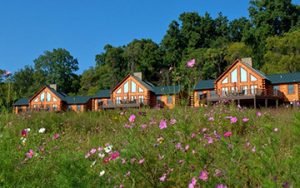
Boulder Crest Retreat for veterans in Bluemont, Virginia
The 18-month Warrior PATHH begins with a weeklong retreat where vets struggling with PTS learn the TM technique and engage with various helping modalities, including horse therapy, journaling, songwriting, talk therapy, and wilderness treks. Learning TM is the “game-changer” for all other program elements, Dusty says. Most importantly, veterans “get to take this home.”
This program is highly effective. Boulder Crest Retreat is 6 months into an 18-month longitudinal study, and the preliminary findings from the program data evaluation are showing that the Warrior PATHH program for combat-stress reduction with applied post-traumatic growth curriculum is two to three times more effective than current modalities available.
Now other veterans programs are requesting the Warrior PATHH curriculum for post-traumatic growth, with the TM technique at its center. Dusty and his Boulder Crest colleagues are expanding and developing the program to implement at other facilities and other regions. The demand for the Warrior PATHH program led Boulder Crest to open a second retreat center on 130 acres in Arizona’s Coronado National Forest in May, 2017.
Warrior PATHH is the first veterans-focused retreat program licensed to deliver the Transcendental Meditation program to its participants. Boulder Crest partners with the David Lynch Foundation and TM for Veterans, an initiative of the Maharishi Foundation USA, both of which generously provide scholarships for Warrior PATHH participants to learn TM®.
Dusty has dedicated his life, his knowledge as a TM teacher, and his military experience to bringing relief, healing, and hope to veterans and active-duty service members. “It’s not what’s wrong with us,” Dusty told a Richmond, Virginia, newspaper. “It’s what’s happened to us. You can never change what happened… but you can look at the adversity and build strength, and struggle well in life.”
Learn more about TM for Veterans in this Enjoy TM News article ►
Read about a new study on how TM reduces PTS ►
Rachel Katz and Sasha Kamini Parmasad
Healing and Empowering Women and Girls, DLF Women’s Health Initiative

Rachel Katz, Director of the DLF Women’s Health Initiative
“While the circumstances under which I meet my students are painful, I love the work I do. To witness their resilience and healing is nothing short of a complete joy,” Rachel Katz, Director of the David Lynch Foundation (DLF) Women’s Health Initiative, wrote for LennyLetter.
She and Assistant Director Sasha Kamini Parmasad are leading the effort to heal and empower victims of abuse through the transformative benefits of the TM technique. As certified TM instructors and creative artists—Rachel works in film and video, and Sasha is a poet—they bring their profound knowledge and creative passion to their work with women and girls.
As the #MeToo movement has made painfully clear, sexual harassment on the job cuts across industries. Unfortunately, domestic violence, rape, and violent assault are just as rampant. One out of four women will be assaulted or raped by their spouse or partner during their lifetime, and nearly 3 million children witness this every year.
To help combat this epidemic of violence and assault against women and children, DLF launched the Women’s Health Initiative in 2012. The Initiative offers the TM technique, which has been shown to heal and empower victims of abuse. DLF partners with leaders in the field of domestic violence and human trafficking across the United States and around the world to teach the TM technique to women and children who need it most.
“To witness their resilience and healing is nothing short of a complete joy.” —Rachel Katz
For example, DLF partnered with the New York City Mayor’s Office to Combat Domestic Violence, helping victims across the city heal from trauma and alleviate post-traumatic stress. Women learned the TM technique at the Family Justice Center at no cost.
Helping Women Become Blissfully Free Again

Sasha Kamini Parmasad, Assistant Director of the DLF Women’s Health Initiative
Sasha, who is originally from Trinidad and Tobago, articulated what female victims of abuse are looking for when they learn the TM technique as part of the Health Initiative. “They want inner peace. They want to feel like themselves again. They want to remember what it feels like not to be battling life every single step of the way… to feel that they have some beauty in them, and to reconnect to that beauty,” she told DLF CEO Bob Roth.
They also want very practical things, Sasha added—“to get rest, to be able to sleep better, to be able to get off some of their medications. They want to be able to take care of their families, and to deal with court cases. They want to be more of themselves, to be their true self.”
As Sasha and Rachel journey with women in prisons and shelters on a path of healing, they’ve learned that these women aren’t victims but “wise women” who are indeed reconnecting with their true selves and inner strength.
“I’ve worked with inmates at Rikers Island, veterans, and women and children in the shelter system,” wrote Rachel for LennyLetter. “Often the women I meet have some resistance to the concept of closing their eyes and spending time alone in their head. After all, that is where painful thoughts and memories lie. . . . But with each meditation, their bodies are able to heal deeply rooted traumas, and their brains begin to function in a healthier, more integrated way.”
“They want inner peace. They want to feel like themselves again. They want to remember what it feels like not to be battling life every single step of the way… to feel that they have some beauty in them, and to reconnect to that beauty.” —Sasha Kamini Parmasad
Much time in Rachel’s classes is spent laughing about how good it feels to have a sense of freedom from within. “During meditation, students experience both their minds and bodies as peaceful, clear, and blissfully free.”
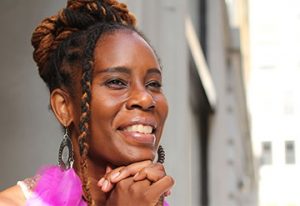
Cynthia, a survivor of sexual assault who has benefited from the DLF Women’s Health Initiative
To find out more about how Rachel and Sasha and the Women’s Health Initiative are supporting women and girls in need, visit the David Lynch Foundation. You can help to bring the profound and scientifically validated mental and physical benefits of the TM technique to women and girls through domestic violence centers, homeless shelters, and community projects worldwide.
Watch Candy Crowley and experts on women’s well-being talk about the DLF Women’s Health Initiative
Our TM Heroes
The 2017 Change-Makers of the Year are bringing the life-changing effects of the TM program to all sectors of society. We celebrate their contribution to the health and well-being of children and communities, veterans and service members, women at risk, and society as a whole.
We’re privileged to honor each of these heroes, who are helping transform our world today. On behalf of the nationwide TM community, we thank you and wish you continued success in your extraordinary work.
Correction: In the original version of this article a photo caption about the “Quiet Time” program in Chicago misidentified the subject; she is the co-founder of Village Leadership Academy, not a student.


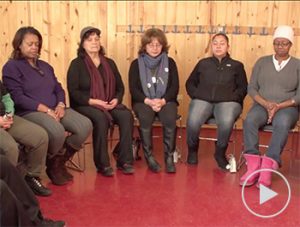
Comments
you may also like
TM in the News
Chicago Tribune: Can TM Help Curb Youth Violence? | 4:33
The front page of the Tribune offers hopeful news: The University of Chicago Crime Lab has joined forces with the David Lynch FoundationSM to transform lives and research the effects of the TM-based “Quiet Time” program in at-risk schools.
TM in the News
Meditation Curbs Violence at San Francisco Schools | 3:11
What happens when the TM technique is added to the curriculum of a struggling school? NBC Nightly News and Cynthia McFadden wanted to find out.
Helping Others
Veterans Are Taking Back Their Health—and Their Lives | 3:13
With roughly 20 suicides a day, veterans need more effective treatments. TM is gaining recognition as a proven program for post-traumatic stress. The launch of TMforVeterans.org will help more active-duty personnel and veterans take back their lives.
Helping Others
The 2016 Change-Makers of the Year
A young woman working with inner-city youth. A former Army Command Surgeon breaking the PTSD cycle. Teachers establishing TM at an American medical school. And our Change-Maker of the Year—an educator who’s brought TM to at-risk students for over two decades.